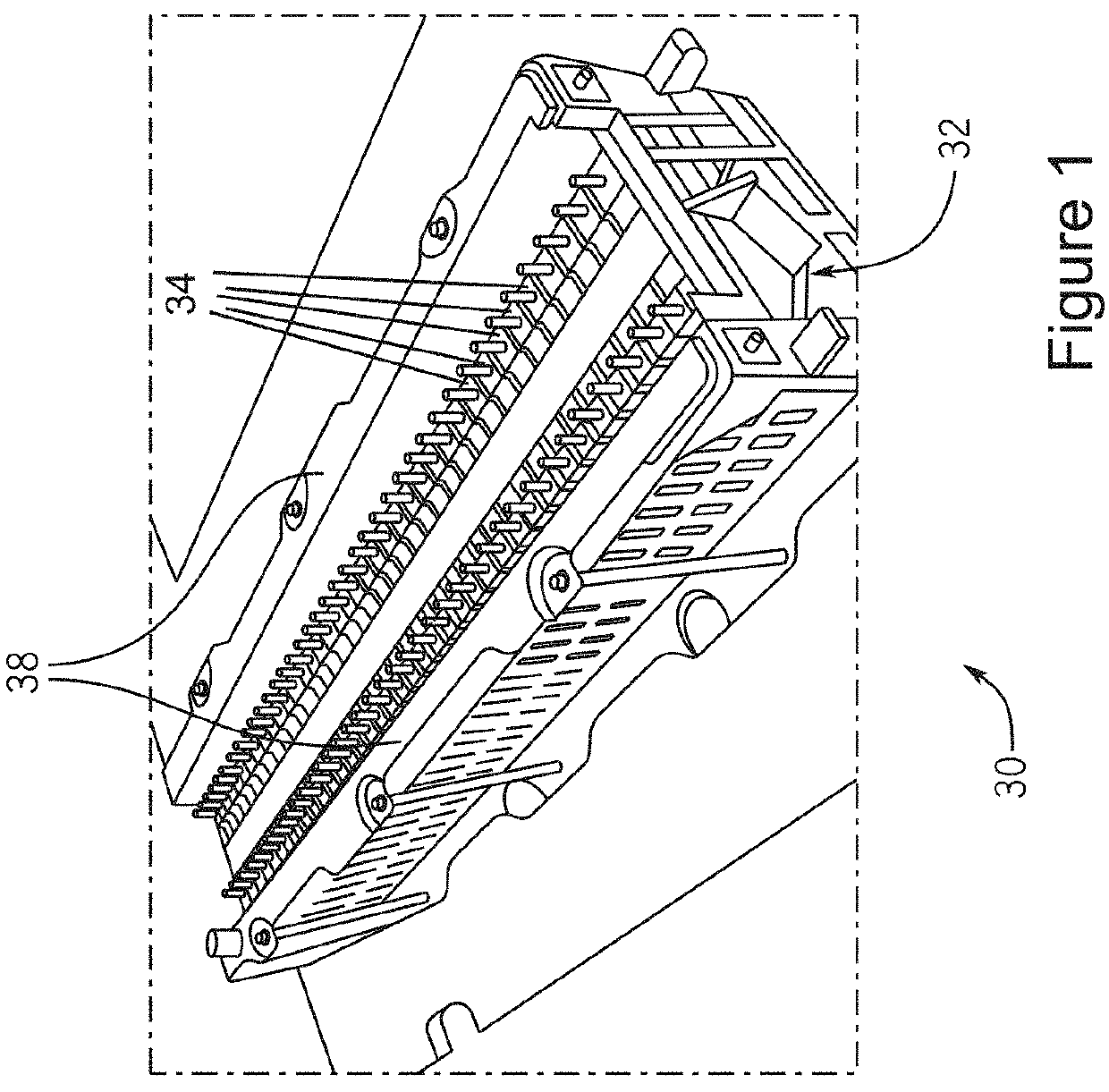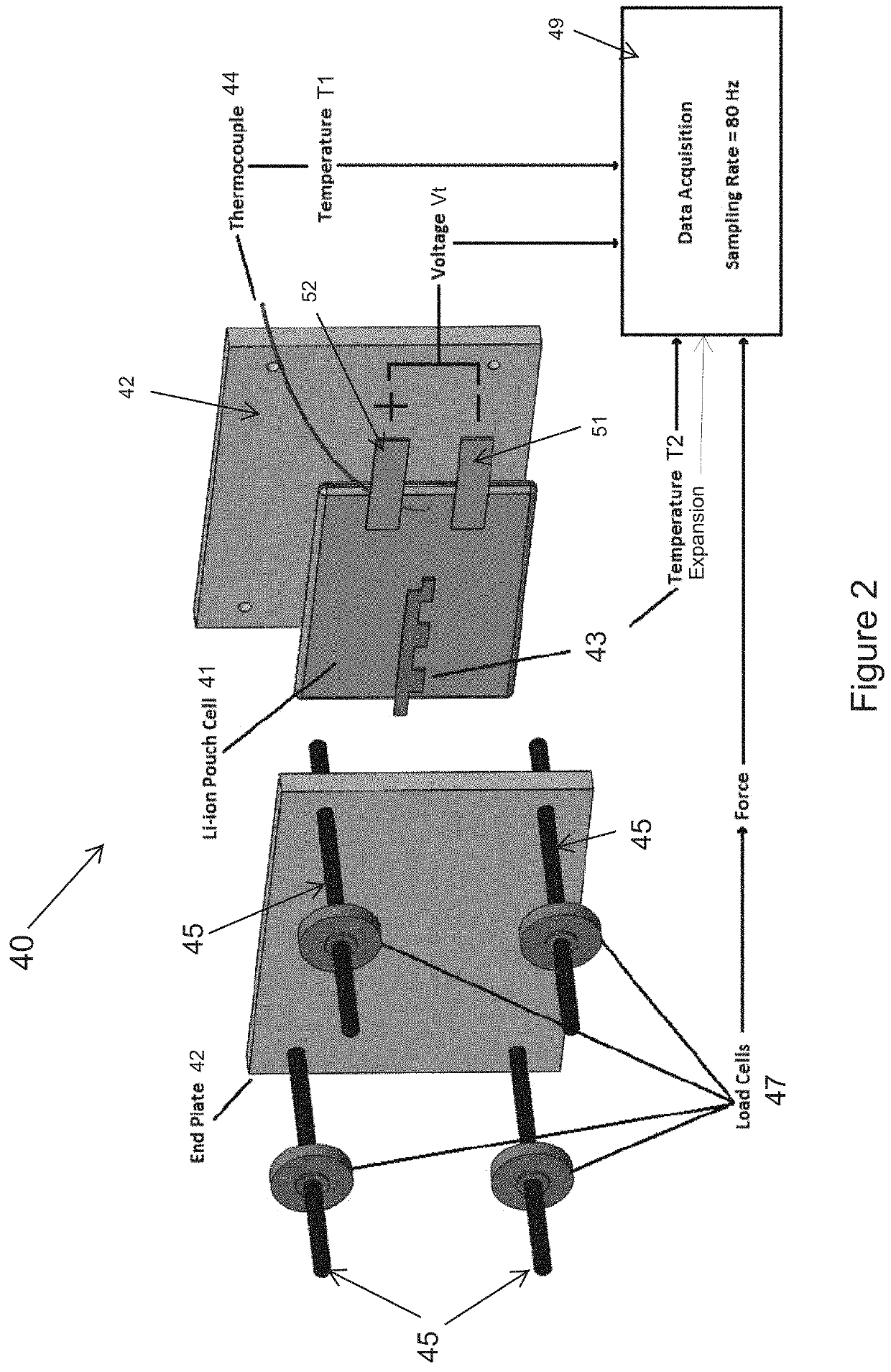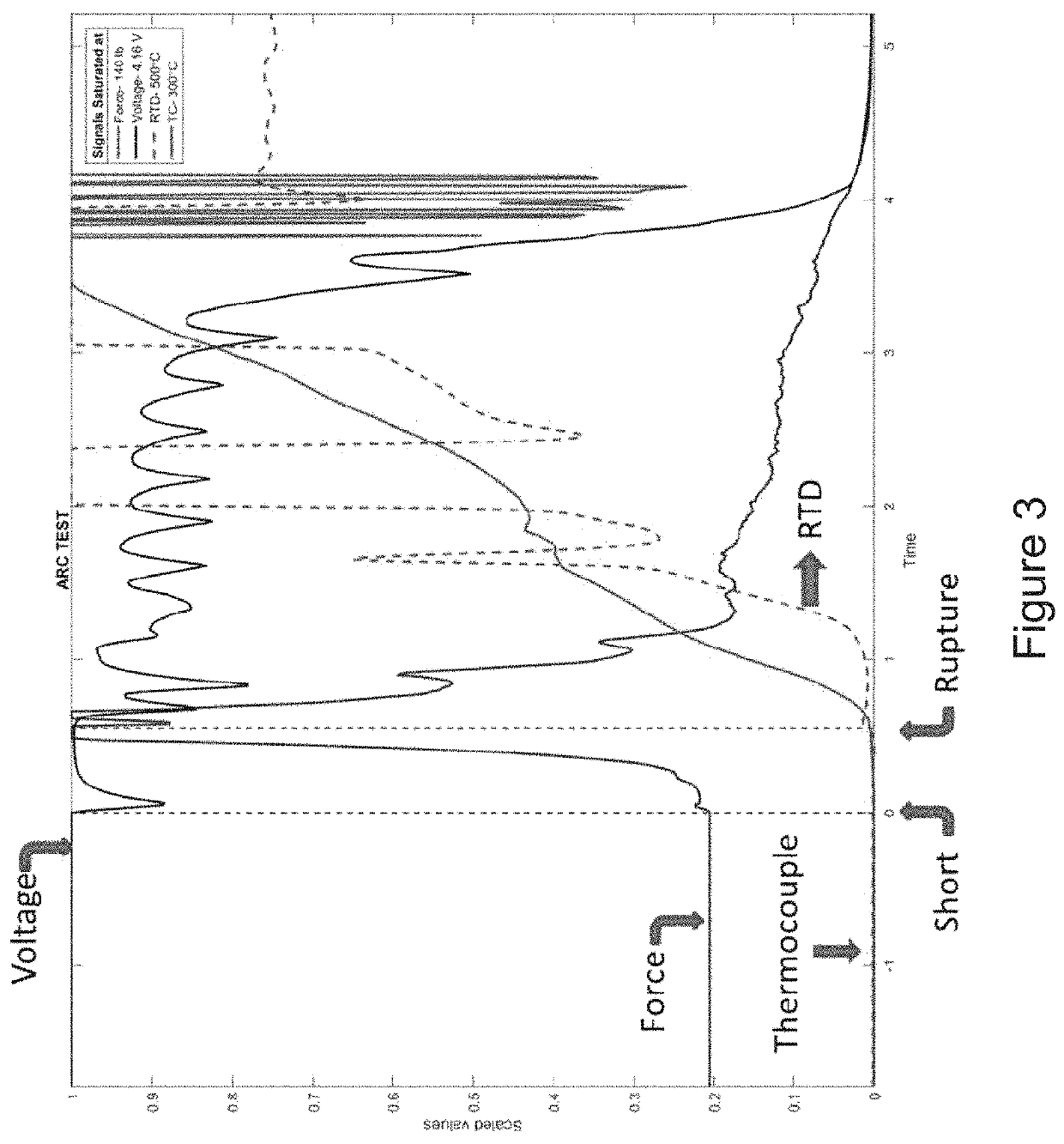Detection of an internal short circuit in a battery
a technology of internal short circuit and battery cell, which is applied in the field of electric devices, can solve problems such as the existence of internal short circuit risks of battery cells
- Summary
- Abstract
- Description
- Claims
- Application Information
AI Technical Summary
Benefits of technology
Problems solved by technology
Method used
Image
Examples
example 1
[0093]A 4.5 amp hour lithium nickel manganese cobalt oxide (NMC)—graphite pouch cell with a built-in internal short circuit device was fabricated for the experiment. The built-in internal short circuit device used was similar to one described in U.S. Pat. No. 9,142,829, which is incorporated herein by reference. During the battery fabrication, a hole is cut in the separator, which is then covered by a phase change material (PCM) trigger. The PCM melts when the temperature reaches its melting point at 55° C., thus creating a gap in the separator, allowing the cathode and the anode to contact and trigger the internal short circuit.
[0094]A fixture 40 shown in FIG. 2 was designed and used in the experiment. The NMC-graphite pouch cell 41 was placed between two 1-inch thick Garolite (a fiberglass-epoxy composite) plates 42.
[0095]A temperature and expansion sensor 43 with six temperature sensing elements was placed on the pouch cell 41. The temperature and expansion sensor 43 is fabricate...
example 2
Overview of Example 2
[0102]Thermal runaway of Li-ion batteries is a major safety issue. It is a complex process involving high heat generation, fast temperature rise and significant amounts of generated gas. Modeling thermal runaway will enable a better understanding and earlier detection of the phenomenon. Since the majority of the thermal runaway incidents are triggered by an internal short circuit, this paper presents a model describing lithium-ion battery thermal runaway triggered by an internal short. In this study, two internal short circuit experiments were conducted on two nickel manganese cobalt oxide pouch cells, one that was fully charged and one half charged. The fully charged cell went into a quick thermal runaway, while the half-charged cell evolved only into a slow, self-discharge process. Both of these experiments demonstrate that a huge battery swelling force signal can be detected prior to the surface temperature rise during an internal short circuit event. This th...
PUM
| Property | Measurement | Unit |
|---|---|---|
| temperature | aaaaa | aaaaa |
| melting point | aaaaa | aaaaa |
| thickness | aaaaa | aaaaa |
Abstract
Description
Claims
Application Information
 Login to View More
Login to View More - R&D
- Intellectual Property
- Life Sciences
- Materials
- Tech Scout
- Unparalleled Data Quality
- Higher Quality Content
- 60% Fewer Hallucinations
Browse by: Latest US Patents, China's latest patents, Technical Efficacy Thesaurus, Application Domain, Technology Topic, Popular Technical Reports.
© 2025 PatSnap. All rights reserved.Legal|Privacy policy|Modern Slavery Act Transparency Statement|Sitemap|About US| Contact US: help@patsnap.com



